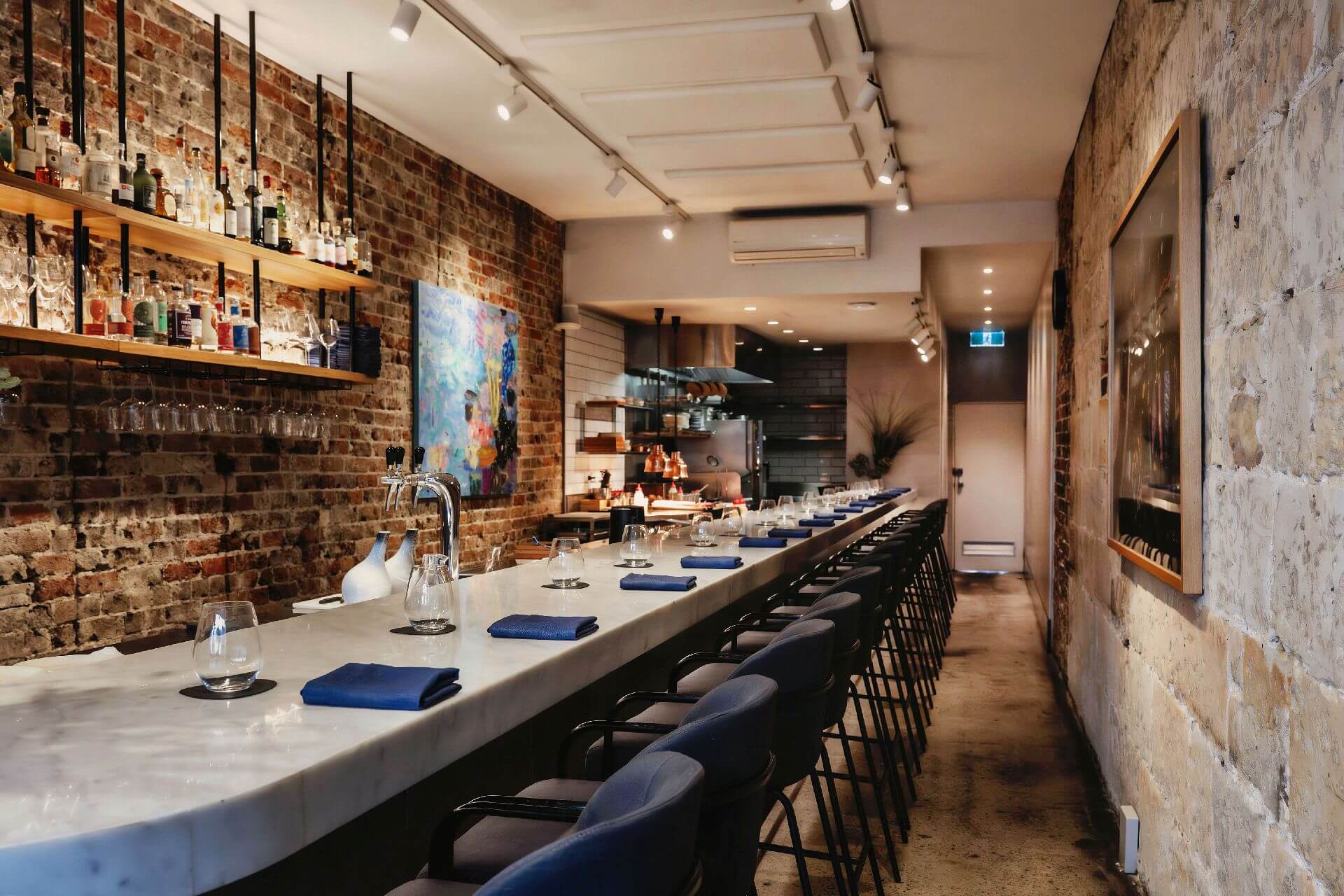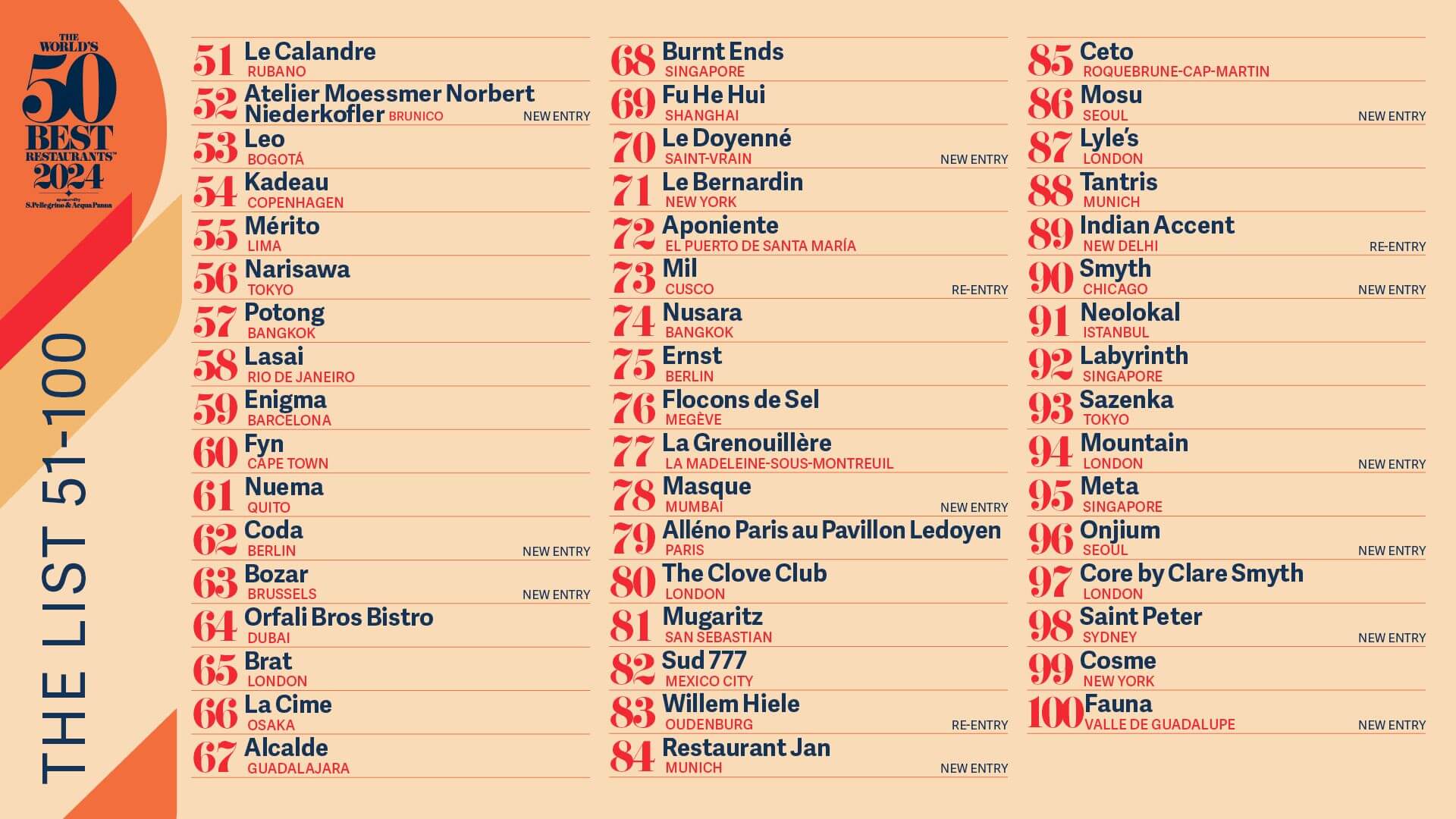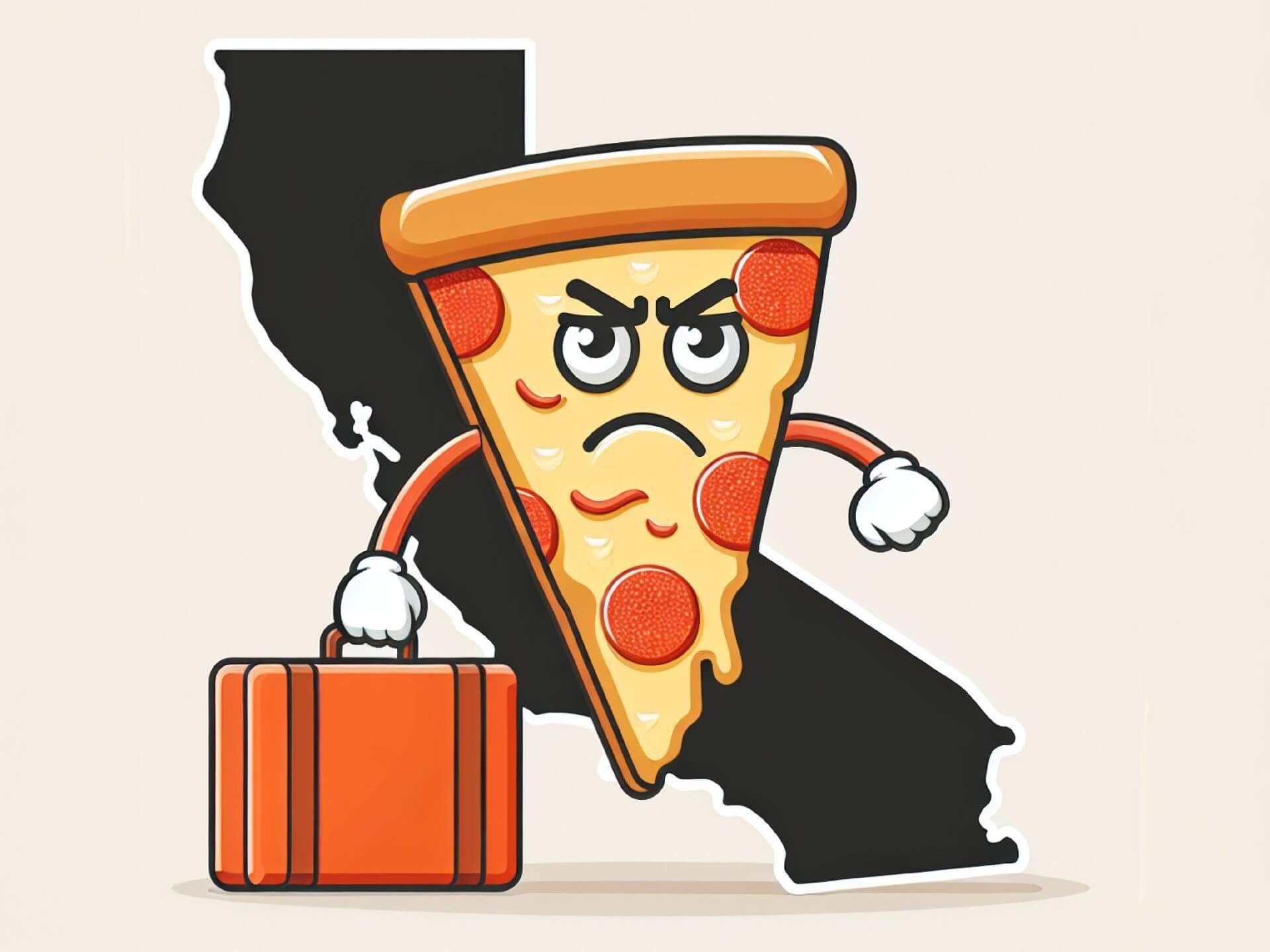2024 World’s 50 Best Restaurants: 51 to 100
by David Klemt

Saint Peter restaurant in Sydney, New South Wales, Australia, number 98 on the 2024 World’s 50 Best Restaurants list, numbers 51 through 100.
The World’s 50 Best Restaurants is excited to announce numbers 51 through 100 on this year’s list ahead of the awards ceremony in Las Vegas on June 5.
Those who are curious or in need of a refresher can click here for last year’s 51 through 100. Our coverage on numbers 1 through 50 from 2023 is here.
More than 1,000 independent voters—consisting of chefs, journalists, and foodies on the go—helped to form this year’s list. These same experts cast their votes to create the 2024 World’s 50 Best Restaurant ranking, numbers one through fifty.
But let’s get back to restaurants 51 through 100. Twelve of the extended list are new entries to the list. That means that a quarter of the back 50 restaurant are new to the World’s 50 Best Restaurants.
Along those lines, three are re-entries. These restaurants are Mil in Cusco, Peru; Willem Hiele in Oudenburg, West Flanders, Belgium; and Indian Accent in New Delhi, India.
Just three of the restaurants on the extended list are in the US, with one in Chicago and two in New York City. Unfortunately, none are located in Canada. Hopefully, at least one restaurant in the Great White North will find itself ranked somewhere among the top fifty.
Now, I don’t often defer to a press release to provide you with more information. However, everything you could want to know about not just this half of the list but also the awards ceremony on June 5 in Las Vegas is included in the official press release below. This includes how to watch the awards live as each restaurant and their position is revealed.
Congratulations to restaurants 51 through 100 for 2024! And cheers and good luck to numbers one through fifty!

THE WORLD’S 50 BEST RESTAURANTS ANNOUNCES THE 51-100 LIST FOR 2024
The extended list is unveiled ahead of The World’s 50 Best Restaurants 2024 awards ceremony in Las Vegas on 5 June
22 May 2024 – The World’s 50 Best Restaurants 2024, sponsored by S.Pellegrino & Acqua Panna, today reveals the list of restaurants ranked from No.51 to No.100, ahead of this year’s awards ceremony, which takes place in Las Vegas on 5 June. The extended 51-100 list features restaurants across six continents and is compiled from the votes of 1,080 independent experts from the world of gastronomy, from food journalists and globally renowned chefs to travelling gastronomes. Each has contributed their votes to The World’s 50 Best Restaurants 2024, with the full list to be revealed two weeks from today, live on stage.
The 51-100 List in Numbers
- The 51-100 list includes 12 new entries from 11 different cities, ranging from Berlin and Mumbai to Seoul and Sydney
- The 51-100 list includes restaurants in 23 territories across six continents
- 13 entries are from Asia, 23 from Europe, six from North America, five from South America, one from the Middle East, one from Africa and one from Oceania
- The highest new entry in the 51-100 list is Atelier Moessmer Norbert Niederkofler in Brunico, Italy, at No.52
Europe gains six new entries to the list this year, including Atelier Moessmer Norbert Niederkofler (No.52) in Brunico; Coda (No.62) in Berlin; Bozar (No.63) in Brussels; Le Doyenné (No.70) in Saint-Vrain; Restaurant Jan (No.84) in Munich and Mountain (No.94) in London.
France leads the way with four further restaurants, including: Flocons de Sel (No.76) in Megève; La Grenouillère (No.77) in La Madelaine-sous-Montreuil; Alléno Paris Au Pavillon Ledoyen (No.79) in Paris and Ceto (No.85) in Roquebrune-Cap-Martin also represented. Four further restaurants in the UK are represented on the extended list, with Brat (No.65), The Clove Club (No.80), Lyle’s (No.87) and Core by Clare Smyth (No.97) all claiming a spot.
Germany boasts a total of four entries in the ranking, with Ernst (No.75) in Berlin and Tantris (No.88) in Munich, also placing. Three restaurants from Spain are voted into the extended list: Enigma
(No.59) in Barcelona, Aponiente (No.72) in El Puerto de Santa María and Mugaritz (No.81) in San Sebastián. Italy is also represented by Le Calandre (No.51) in Rubano, while Belgium’s Willem Hiele, in Oudenburg, returns to the list at No.83. One restaurant from Denmark and Turkey each place in the ranking, in the form of Kadeau (No.54) in Copenhagen and Neolokal (No.91) in Istanbul, respectively.
Asia welcomes new entries from Masque in Mumbai (No.78), as well as Mosu (No.86) and Onjium (No.96), both in Seoul, alongside a return for New Delhi’s Indian Accent (No.89). Three Japanese
restaurants feature on the list: Narisawa, Tokyo (No.56), La Cime, Osaka (No.66) and Sazenka, Tokyo (No.93). Mainland China is represented by Fu He Hui, Shanghai at No.69, while Singapore has three placements, including Burnt Ends at No.68, Labyrinth at No.92 and Meta at No.95. Two Thai restaurants place in the ranking with Potong at No.57 and Nusara at No.74, both located in Bangkok.
The World’s 50 Best Restaurants continues to recognise North America’s flourishing gastronomy with new entries Smyth, in Chicago, at No.90 and Fauna, in Valle de Guadalupe, Mexico, at No.100. Two further restaurants from Mexico feature: Guadalajara’s Alcalde at No.67 and Mexico City’s Sud 777 at No.82. From the US, Le Bernadin in New York is at No.71 while Cosme, also in New York, is at No.99.
South America claims five entries on the extended list. Bogotá’s Leo – from The World’s Best Female Chef 2022, Leonor Espinosa – places at No.53. Mérito, Lima comes in at No.55, while Cusco’s Mil is at No.73. Lasai in Rio de Janeiro is at No.58 and Nuema, Quito – home to The World’s Best Pastry Chef 2023, Pía Salazar – is voted No.61.
Cape Town’s Fyn, winner of the Sustainable Restaurant Award 2023, places at No.60, while Dubai’s Orfali Bros Bistro is at No.64. Australia is represented in the extended ranking by Sydney’s Saint Peter, led by chef Josh Niland, which places at No.98.
William Drew, Director of Content for The World’s 50 Best Restaurants, comments: “This year’s extended list is a true representation of global gastronomy. With restaurants located across six
continents, we’re thrilled to see so many new entries from exciting names that are making their mark on the dining world. Huge congratulations to all the restaurants and teams on this year’s
extended list; we look forward to celebrating their successes together at next month’s awards ceremony in Las Vegas.”
The Voting Process
The World’s 50 Best Restaurants 2024 list is voted for by 1,080 international restaurant industry experts and well-travelled gourmets who make up The World’s 50 Best Restaurants Academy. The
gender-balanced Academy comprises 27 separate regions around the world, each of which has 40 members including a chairperson. No sponsor from the event has any influence over the voting process.
Professional services consultancy Deloitte independently adjudicates The World’s 50 Best Restaurants list, including the ranking from 51-100. This adjudication ensures that the integrity and authenticity of the voting process and the resulting lists are protected.
Results
The awards ceremony for The World’s 50 Best Restaurants 2024 is being held in Las Vegas on Wednesday 5 June and will also be streamed live on the 50 Best Facebook channel via the link here
and the YouTube channel via the link here. The announcement of the list and individual awards can be followed via the 50 Best social media channels, with the livestream beginning at 20:25 (Las Vegas time) and 04:25 UK time.
50 Best Social Media
Follow on Instagram: @TheWorlds50Best #Worlds50Best
Follow on X: @TheWorlds50Best
Like on Facebook: https://www.facebook.com/50BestRestaurants
Subscribe to the YouTube channel: 50 Best Restaurants TV
About The World’s 50 Best Restaurants
Since 2002, The World’s 50 Best Restaurants has reflected the diversity of the world’s culinary landscape. The annual list of the world’s most prestigious restaurants provides a snapshot of some of the best destinations for unique culinary experiences, in addition to being a barometer for and a pioneer of global gastronomic trends. The 50 Best family also includes Latin America’s 50 Best Restaurants, Asia’s 50 Best Restaurants, Middle East & North Africa’s 50 Best Restaurants, The World’s 50 Best Hotels, The World’s 50 Best Bars, Asia’s 50 Best Bars, North America’s 50 Best Bars, 50 Best Discovery and the #50BestTalks series, all of which are owned and run by William Reed. 50 Best aims to bring together communities across the hospitality sector to foster collaboration,
inclusivity, diversity and discovery and help drive positive change.
About the host city: The Las Vegas Convention and Visitors Authority (LVCVA)
The Las Vegas Convention and Visitors Authority (LVCVA) is charged with marketing Southern Nevada as a tourism and convention destination worldwide and with operating the 4.6 million square-foot Las Vegas Convention Center (LVCC). With nearly 155,000 hotel rooms and more than 15 million square feet of meeting and exhibit space in Las Vegas alone, the LVCVA’s mission centres on attracting leisure and business visitors to the area. The LVCVA also owns the Las Vegas Convention Center Loop designed and operated by The Boring Company, and also owns the Las Vegas Monorail, an elevated 3.9-mile system with seven stops throughout the resort corridor. For more information, go to www.lvcva.com, www.visitlasvegas.com or www.vegasmeansbusiness.com.
About the main sponsor: S.Pellegrino & Acqua Panna
S.Pellegrino and Acqua Panna are the main partners of The World’s 50 Best Restaurants. S.Pellegrino and Acqua Panna are the leading natural mineral waters in the fine dining world. Together they interpret Italian style worldwide as a synthesis of excellence, pleasure and well-being.
Our partners:
- The Las Vegas Convention and Visitor Authority (LVCVA) – Official Host City
- Wynn Las Vegas – Official Host Hotel Partner
- S.Pellegrino & Acqua Panna – Main Partner & Official Water Partner; sponsor of The World’s Best Restaurant Award
- Estrella Damm – Official Beer Partner; sponsor of the Estrella Damm Chefs’ Choice Award
- Resy & American Express – Official Booking Platform and Credit Card Partner; sponsor of Resy One To Watch Award; presenting partner of 50 Best Signature Sessions
- Gin Mare – Official Gin Partner; sponsor of Gin Mare Art of Hospitality Award
- Woodford Reserve – Official American Whiskey Partner, sponsor of the Woodford Reserve Icon Award
- Sosa – Official Ingredients Partner; sponsor of The World’s Best Pastry Chef Award
- Beronia – Official Wine Partner; sponsor of the Beronia World’s Best Sommelier Award
- Aspire Lifestyles – Official Concierge Partner
- Lee Kum Kee – Official Sauce and Condiment Partner
- Dassai Sake – Official Sake Partner
- Kaviari – Official Caviar Partner
- Hwayo – Official Soju Partner
- illycaffè – Official Coffee Partner
- Champagne Nicolas Feuillatte – Official Champagne Partner
- Tequila Ocho – Official Tequila Partner
- The Craft Irish Whiskey Co. – Official Whiskey of the World Partner
- Cinco Jotas – Official Iberico Ham Partner
- Ancho Reyes Chile Liqueur – Official Mexican Liqueur Partner
- Three Cents – Official Mixers Partner
- Highstreet World – Official Metaverse Partner, sponsor of the Highest Climber Award
- Nude Glass – Official Glassware Partner
- Jaén Selección – Official Olive Oil Partner
- Resorts World Las Vegas – Official Welcome Dinner & Closing Party Partner
- The Venetian Resort Las Vegas – Official Partner
Image: Saint Peter in Sydney, NSW, Australia



















